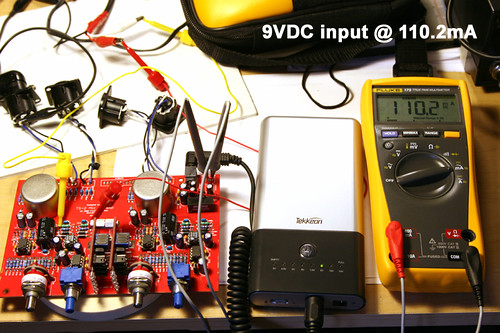Lead will stand a lot more abuse than LiIon
Well, I have read the opposite. Lead have the advantage of price/mah ratio, so a big battery will not suffer because will not discharge a lot %. Li-ion in the other hand is more expensive, and so the mah usually are less. But you can totally charge and discharge a Li-ion about 1000 cycles, and even that batteries suffer less with full discharges than with partial charging/discharging.
Lead are cheap, but more weight, but they will suffer more degradation for higher discharges in %, and don´t like full discharging. , Have a look here: http://www.batteryuniversity.com/
There is a reason why I prefer rechargeable over 50 pcs disposable batteries. With disposable, I have to open the preamp each time I need to replace, one or more batteries. With rechargeable, I can buil a conector in the rack to charge them. One estereo mini-jack, can work for two batteries, just attach that mini-jack to the Switch DPDT, to the pins that make contact when the preamp is off. So I assure that if switch is on, the mini-jack will make no contact to batteries, and switch off, mini-jack go to batteries, but batteries don´t go to preamp.
Since I have ordered 8 batteries, I will have separate voltage for the preamp, for the Cmoy, and for the DI box. The only doubt here is if 7.4 nominal, 5.5voltage will be too low for the Supergreen? With 6V, +/- 12V would be still ok?
In the other hand, that 8 batteries will give me the 20 hours each section, what is more than good for just 1 hour charging.
The chip solution is good really. The reason I thought about the zener-diode-brightness, was because I thought that having a led as indicator of "power on". It have been happened to me, to forget switch off the Cmoy or the preamp, and get a discharge battery the next day. I think the chips are a good idea really, but maybe I could try the brighness aswell fot the "power on" led. The red leds, I have added on RS to my basket have a typical 1ma consumption, what I don´t think is much waste, don´t think there is much diference between 20ma, and 21ma really.
Regargind to the led, I have tried yesterday with one 6.4V, that seem to stabilize quite well the voltage even on uA, so I must check a zener with a good curve on low current. I have made aswell some calculation, what could be wrong, of course, but I want to make the try. It was some adventure, but at first I see they fit:
R= AV/AI AV= 8.4-5.5V= 2.9V. Put a more realistic range, for example, 8Vmax, 6Vmini, so AV=2V.
AI, let´s put max 1ma, min, 0.3ma for example, so AI=0.7 ma
R= AV/AI= 2V/0.7ma= 2.85k
The voltage on the zener and the led vary very low, so calculate for average voltage:
Taking the battery max at 8V and 1ma, as I take before, that would be, 8V-1.6V (led)-2.85V (resistor)= 3.55v zener.
Since Vresistor= IxR= 1ma x 2.85k= 2.85V
Now calculate for minium voltage of the battery at 6Volt to see if fits.
The zener if were perfect, would still have 3.55V. And led 1.5V. That is, 5.05volt. The voltage on the resistor will be 6V-5.05V= 0.95V, what would mean I=V/R = 0.95/2.85k= 0.33 ma. So if the zener would be perfect, and my calculations are ok, the range of amperage through the led ca be adjusted with the resistor.
If we take the zener on 0.3ma would be 3v, instead of 3.55V, that would give: 3V+1.5v= 4.5volt.
6V-4.5V= 1.5V on the resistor. I= 1.5V/2.85k= 0.5 ma. So the range would be in that case 0.5ma-1ma, so I suspect that adjusting the resistor to get more theorical variation, could compesate the final behaviour depending on the Zener specs.
Let me know what you think about this.
I would need to adjust the resistor to have a real amperage range. Could use this on the power one led, but aswell ad the low battery led with the chips.





















![Soldering Iron Kit, 120W LED Digital Advanced Solder Iron Soldering Gun kit, 110V Welding Tools, Smart Temperature Control [356℉-932℉], Extra 5pcs Tips, Auto Sleep, Temp Calibration, Orange](https://m.media-amazon.com/images/I/51sFKu9SdeL._SL500_.jpg)












